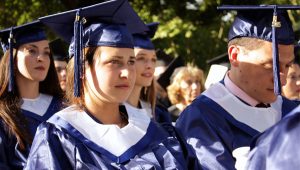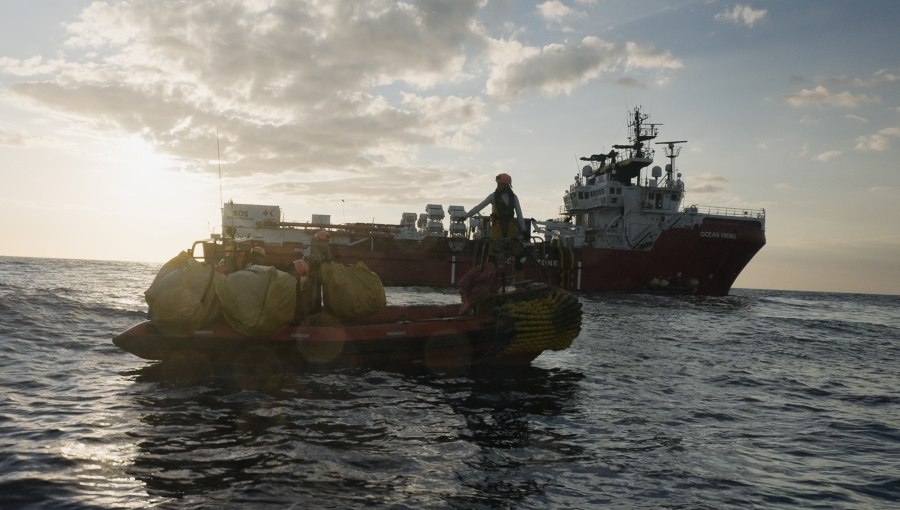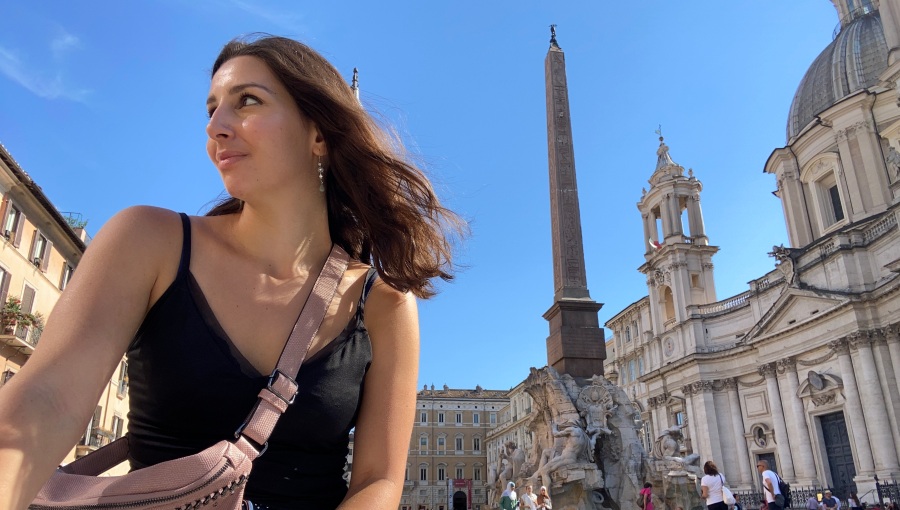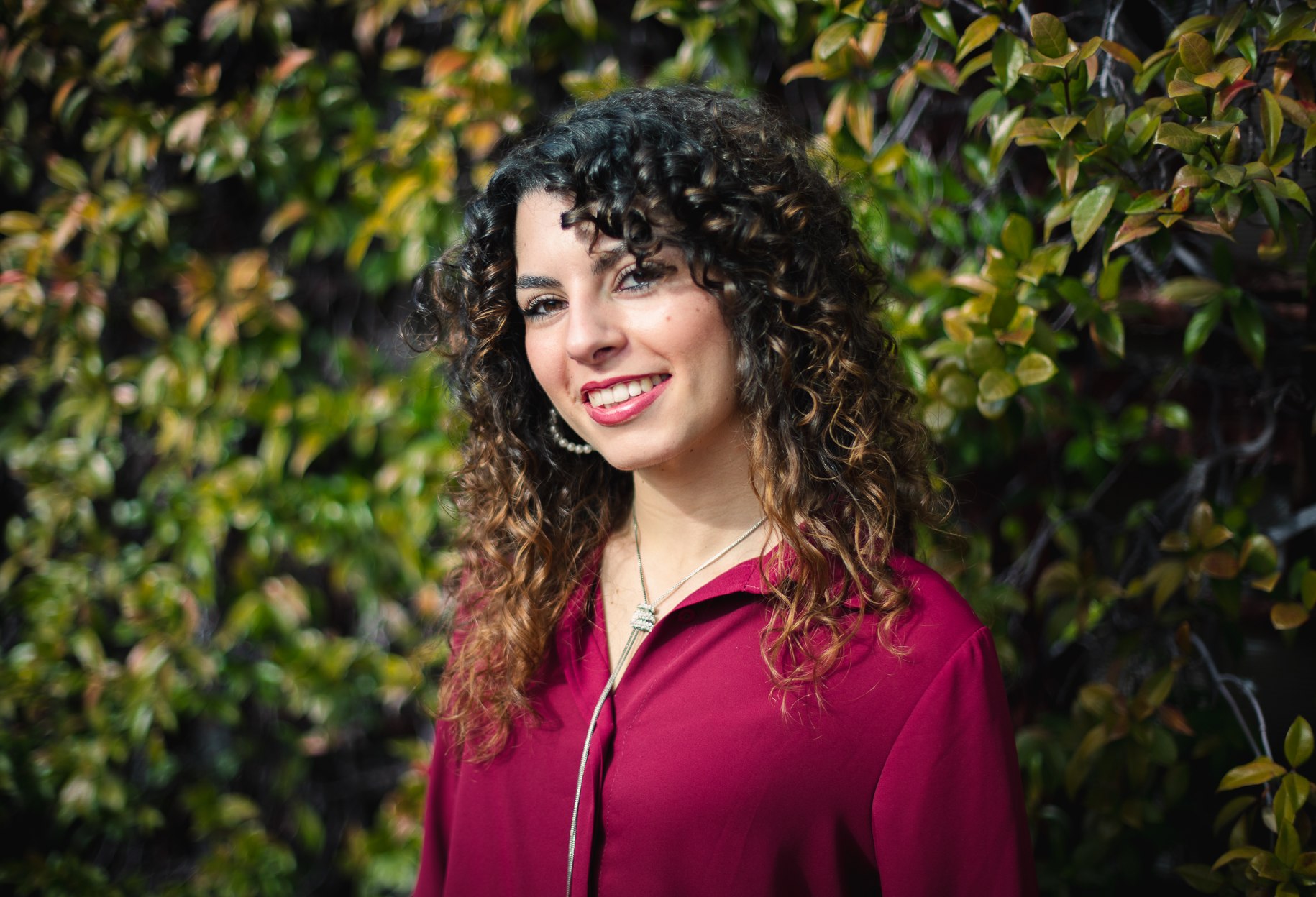Alumna Geraldine Ghelli Publishes Photos in "New Yorker"
JCU alumna Geraldine Ghelli‘s photos have been published in the New Yorker as part of the “A Portrait of a Couple in Love and in Transition” article, which follows a couple (Michelle Ainsworth and Jennifer Lee) as they undergo gender-confirmation surgery together.
Geraldine graduated from JCU in 2015 with a degree in Communications. She was born in Italy but grew up in New York City, before returning to Italy for high school and eventually John Cabot. She worked as a communications intern for the Food and Agriculture Organization of the United Nations. Upon graduating with an academic achievement award in Studio Art, Geraldine worked along side environmental photographer James Whitlow Delano and Magnum photographer David Alan Harvey. In New York City, Geraldine began her career as a professional event photographer and was featured in the Village Voice for her work during the 2016 elections. She recently graduated from a one-year documentary photography program at the International Center of Photography in New York City.
How’s life after graduation? How’s living in New York?
After graduation, I was both excited and nervous. I finished strong and with a great relationship with some of my professors but was uncertain of what lay ahead and where I was going. Fortunately, during my last two years at JCU, I got involved with the Studio Art Department, working closely with the faculty there. They gave me the courage to pursue my dreams and goals of becoming a photographer.
So, after graduation, I decided to take the leap and move back to New York to find work and make a living doing photography. It wasn’t easy. It’s a cut throat industry and the New York City photo industry scene is saturated and competitive. I dog walked, babysat and took on several different jobs before working in photography. I finally landed my first job as a studio assistant for Adam Fuss, an extremely talented British photographer. It was an interesting experience. For example, he had 22 snakes in his studio and I was responsible for all of them! After working there for a while I realized that I wanted to be taking pictures, I wanted to be actively looking for good light and unique moments. I was always photographing on my own time, but not professionally yet.
I later managed to get a paid internship, which then became a full-time position, with Olli Studio, a wedding photography company based in Midtown Manhattan. For 8 months I worked as a second shooter at weddings, bar/bat mitzvahs, corporate parties, you name it! At that time I was also working on all edits and post-production for Olli Studio. It was an extremely valuable working experience. Thanks to this I was able to understand the kind of work I wanted to be doing long term, and for the rest of my life, which is documentary photography. So I applied to for a one-year documentary photography program at the International Center of Photography in New York City. I was exposed to so much amazing work, got to meet talented photographers and professionals working in the photo industry and built an extremely close relationship with all my very talented classmates. There are certain “rules” that govern the photo industry and I was able to learn a lot about how to navigate it and play along. I just graduated in June, and it has all been a whirlwind!
Congratulations on having your photos published in the New Yorker! Could you tell us a bit about that experience?
I had 5 months in my graduate program to dive into a long-term story and I wanted to explore the transgender experience. I was familiar with a lot of work that had been done on it before but never felt connected to any of it. I tried to shy away from the spectacle-driven narrative by entering and being let into Michelle and Jennifer’s lives. This is how I want to keep approaching long-term stories. As a photographer I try to be accepted as much as possible. It’s so beautiful and gratifying having someone let you be a part of their experience and seeing them change over time and open up to you. That is why I do this.
The most challenging thing about the story was being both a friend and a photographer. I built a lot of trust with them and as a result there was mutual care and affection among us. At first I didn’t know how to handle it, but then I realized that photographing doesn’t have to be so mechanical, and uneasy. It can become an extension of the bond that you create with your subjects.
What are you doing now?
Right now I am trying to work as a freelance photographer. This means a lot of pitching, trying to get meetings with editors, making new work and proposing it to editors. Mostly what I am trying to do right now is being called on assignments. I’m trying to improve my photography, but also prove myself to the industry. I want editors to know I have what it takes and have them trust me enough to call me up to shoot.
How did you become interested in making photography as a profession?
I started becoming seriously interested in photography during my time at John Cabot when I took a photojournalism class with Prof. Giulia Muir. It was actually right when Pope Ratzinger had stepped down. Overnight Rome had become the world’s spectacle and I was fortunate enough to be in the middle of it. I took to the streets and photographed and probably spent more time outside than I did at home. I felt really lucky to be in Rome at that time especially because people were coming from all over the world to document what was happening.
With so many factors competing for the audience’s attention, and considering our attention span has shrunk overtime, what is the key to good photography?
The key to good photography is listening to your gut and going for it. Most likely failing, but getting back up on your feet and listening to your gut again… and so on. This, until you win your first Pulitzer prize.
Another really important thing to do, which I think is not stressed enough, is to watch movies, read, listen to all kinds of music, listen to podcasts, take a walk in a new neighborhood, and talk to strangers. This is how you get inspired and make truthful work. It will do two things at once, it will inform you and shape your own unique vision.
Is there any class at JCU that helped you in your career? What are your future career plans?
Yes, absolutely. First of all, big shout out to the Communications, Art History and Studio Art Departments at John Cabot and to all of the talented professors I’ve had the privilege of learning from and working with. You are the bread and butter of JCU! There are so many classes that impacted me, but one in particular was Serafino Amato’s film photography class. He never gave us any boundaries, everything was possible and he encouraged us to experiment, naturally only after learning the right f-stops. He is an inspiration to me and I am where I am today thanks to him.
My career plan for now is to establish myself here in New York City and continue working on personal projects while making a living by getting assignments, pitching out to editors. My goal is to work on national stories here in the US and move on to working internationally.
Any advice for a new student starting college?
Yes! Try out everything, be adventurous, and be curious!
Any advice for aspiring photographers?
Don’t get discouraged easily, there are a lot of “No’s” headed your way. I get them all the time! Build tough skin and help out your colleagues when you can. Believe in the work you do. I know, it’s a lot easier said than done. Even when your self-esteem hits rock bottom you’ve got to find a way to bounce back, because no one is going to take care of you except yourself. The most important thing though for aspiring photographs, or anyone who wants to work in this industry, is to take yourself seriously!
Anything you’d like to add?
I’d like to add a huge thank you to Professor Sarram and Professor Lopez for being the chillest and most knowledgeable professors ever.






